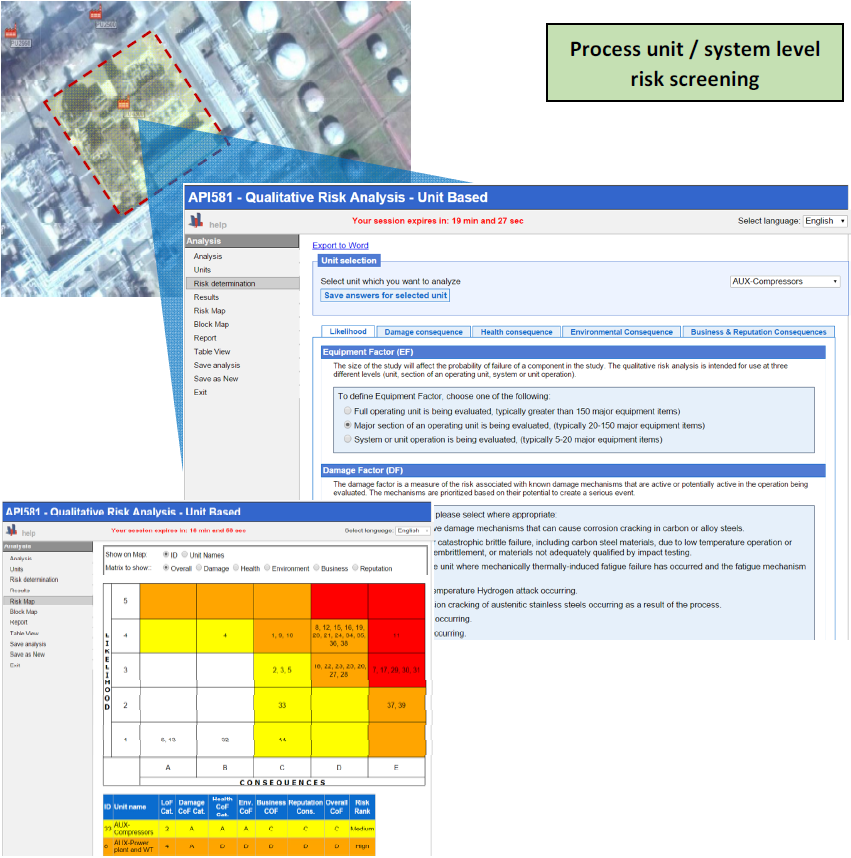|
API 581 qualitative analysis system for unit-based approach (screening) – QLTA:
R-Tech’s QLTA is based on the Workbook for Qualitative Risk Analysis given in Appendix A of the API581 Base Resource Document
QLTA is used to determine the Likelihood and Consequence Category for a given unit. Depending on the nature of the chemicals in a unit, the Consequence Category can be determined based on the flammable or toxic hazards for the unit. Flammable consequences are represented by the Damage Consequence Category due to the primary impact of a flammable event (fire or explosion) is to damage equipment. Toxic consequences fall under the Health Consequence Category due to their impact is usually limited to adverse health effects.

|